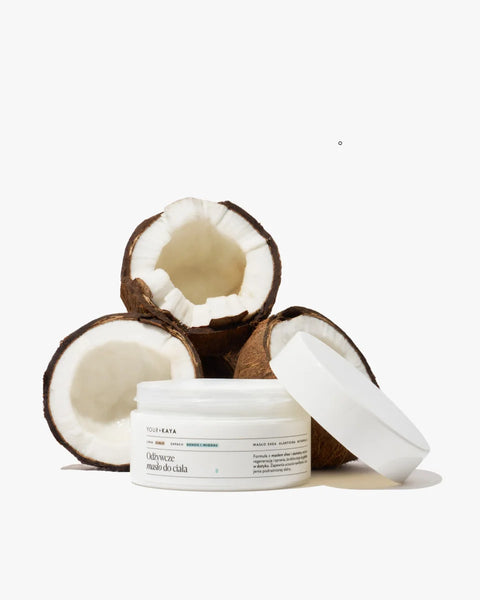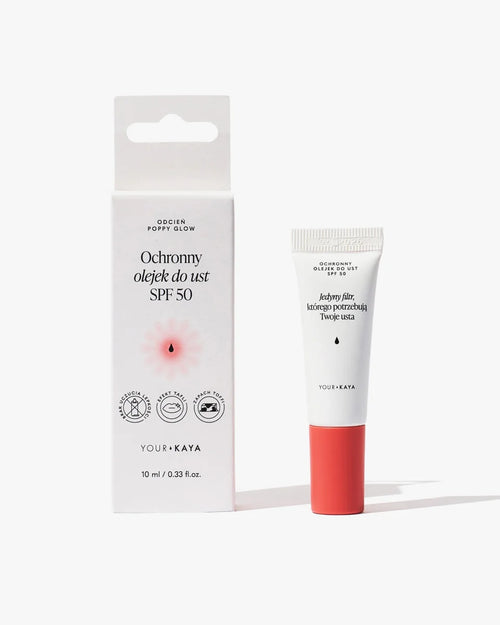Note: This article uses the terms “male” and “female” to refer to the anatomy of cisgender men and women. However, it is important to remember that genitalia do not define gender (which is primarily true for intersex and transgender people—both binary and nonbinary). This text may be useful to people other than cisgender women and men, but it may increase gender dysphoria.
Penis, penis, member…
A symbol of masculinity? What else can you tell from the number of penis-shaped tags on walls or building walls ;) Nevertheless, many people still treat the penis as a kind of insignia of power - and the bigger it is, the better the experience it offers. To what extent is this true? You will find out below.
The penis evolved to introduce sperm into the female reproductive organs to fertilize the egg. It also carries urine out of the body.
The Male Reproductive System, or a Quick Anatomy Review
The components of the male reproductive system are divided into internal and external organs .
Internal organs
- Testicles – they are made up of seminiferous tubules, where sperm are produced.
- Epididymis – This is where sperm mature and are stored. The epididymis consists of tubules lined with cilia that allow sperm to be carried away from the testicles.
- The spermatic cords are the tubes that carry sperm from the epididymis, passing from the scrotum along with nerves and blood vessels through the inguinal canal to the abdominal cavity. The opening of the spermatic cords is located in the urethra.
- Seminal vesicles – are located near the bottom of the bladder, and their openings penetrate the vas deferens in the so-called ampulla (sperm storage). They have the shape of elongated sacs, and their interior is lined with epithelium that secretes sperm components (including proteins and fructose), the production of which is the essence of the functioning of these organs.
- Prostate gland – its main task is to produce the fluid in which sperm exist and which provides them with nutrients.
- Ejaculatory duct – a tubular organ connecting the ampulla of the spermatic cord with the opening of the spermatic cord; anatomically located within the prostate gland.
- Bulbourethral glands – responsible for secreting pre-ejaculate (the clear, mucus-containing secretion that flows from the urethra during sexual arousal) into the urethra.

External genitalia
- Scrotum – a skin-muscular sac in which the testicles are located.
- Urethra – a tube that begins at the bottom of the bladder and ends at the tip of the glans penis. In addition to transporting urine outside the system, it also serves as a transporter for sperm. Sperm exit through the urethral opening, located at the tip of the glans penis.
- Penis – the penis, the male copulatory organ, the hero of our article :)
In adults, the external genitalia are usually covered with dense pubic hair.
The structure of the penis
The internal structure of the penis consists of 3 "columns":
- Two corpora cavernosa – they are formed by a system of cavities separated by trabeculae, into which arterial blood can flow during sexual arousal, thanks to which the penis becomes stiff (an erection occurs).
- Corpus spongiosum – covers the urethra, which runs through the penis.
There are 3 sections of the penis:
- Root – is invisible from the outside, attached to the pubic bone and the ischiocavernous muscle.
- Penile shaft – the middle and longest part of the penis. The shaft is covered with skin and sheaths (muscular, two fascias – flaccid and fibrous – and the tunica albuginea).
- Glans penis - the tip of the penis, the sensitive end of the spongy body. The glans is very strongly innervated and when at rest is covered by the foreskin - a fold of skin designed to protect it. In addition, the foreskin protects the preputial frenulum (a thin fold of skin connecting the lower part of the glans with the foreskin).

Perfect penis size
Does it exist? Let's dispel these doubts!
There are so many myths and stereotypes surrounding the penis that it can be very difficult to break through all of this misleading and false information. It is no wonder that many people fear that their penis is not long enough to provide their partner with the full experience during intimate intercourse.
Before we get to the heart of the matter, however, a few statistics . The average length of an erect penis is about 12 to 14 centimeters, while in a flaccid state it is about 9 centimeters. Similar numbers describe the average circumference of the penis in both of these situations. I am referring here to clinical studies conducted by specialists from King's College London in 2015.
In the case of survey studies, the average penis length derived was a few centimeters longer (here I am referring to the infamous studies conducted by the Kinsey Institute). The problem is that the people responsible for conducting this study did not empirically verify the obtained measurements - hence the conclusion that the penis length reported by the respondents was either measured incorrectly or based on an individual's imagination, confabulation or fantasy about the size of their own penis.
Why am I bringing up such archival information? To introduce you to the age-old debate: does size matter?
Penis size is not a fixed value – many penis owners complain that their penis is shrinking. Yes, it is possible! And what influences it? Among others:
- age – over the years, the amount of collagen and elastin in the body decreases, causing the muscles of the penis to become flaccid;
- lack of sexual activity – may lead to atrophy of the muscle fibers of the corpora cavernosa, and also disturb the level of testosterone in the body;
- addictions – for example, nicotine causes blood vessels to narrow, which prevents blood from flowing to the penis (so a full erection does not occur).
How to measure your penis?
For the curious!
It may seem simple, but paradoxically it is not so trivial. In order to measure accurately, the penis should be measured in an erect state from the pubic bone to the tip of the glans, but without taking into account the foreskin. A penis measured in a flaccid state does not provide us with objective information about the size of the penis, because during an erection its length can increase by up to 100%. As for the circumference - we measure it either at the base or in the middle of the penis, also in an erect state.
Does penis size matter for the quality of intercourse?
Absolutely not – the problem is not in the tool, but in the technique ;)
The most sensitive to stimulation during intimate intercourse is the initial section of the vagina, which is about 10 centimeters. We already know that the average length of an erect penis is much longer. There are more receptors on the lateral walls of the vagina, so it may be the volume, not the length, that matters.

Let's not forget, however, that many people derive much more pleasure from, among other things, clitoral stimulation and caresses or foreplay itself (read more about this here ). The art of love is not only a physical act, but also a mental one - most of it depends on your behavior in bed, and not on how generously nature has endowed you!
What is a penis erection?
An erection is the ability of the penis to achieve and maintain stiffness, which is necessary for sexual intercourse.
We already know that internally the penis consists of two corpora cavernosa. An erection consists of filling them with blood while preventing its outflow. This is a consequence of a series of complex biochemical processes occurring in the body, in which nitric oxide plays a key role. At the moment of sexual arousal, it is produced in the nerve endings and, by stimulating the synthesis of other compounds, causes a decrease in the concentration of calcium cations in the smooth muscles. Translating from medical to "our": this process leads to the relaxation of the smooth muscles and the inflow of blood to the corpora cavernosa while increasing the pressure in them. As a result, the blood vessels close, the blood cannot flow away, and the penis is stiffened and enlarged.
How long does a penis stay erect?
How long an erection lasts depends on the course of sexual intercourse – the accompanying sensory and tactile stimuli and the level of arousal. For some, the short time between erection and ejaculation is an embarrassing problem, significantly reducing sexual satisfaction. There are some “tricks” that can help in this matter – for example, Kegel exercises can allow you to keep your penis erect longer and delay ejaculation. Remember, however, that the most important thing is to talk to your partner, establish common needs, preferences, and above all, rule out that any kind of problems are due to a disease.
How to care for your penis? Hygiene and prevention
Proper penile hygiene is crucial not only for your health, but also for the quality of your sexual life.
- Intimate hygiene – during the toilet, you should gently expose the glans penis, pulling the foreskin off it, and then rinse it with warm water (remembering the direction – from the tip of the penis to the foreskin). This should be done at least once a day, and in the case of, for example, increased physical activity or high atmospheric temperature – even more often (and certainly after sexual intercourse!).
- As in the case of female genital hygiene, you should not use various types of washers, sponges and other cleaning agents, which instead of actually removing bacteria from the surface of the organs, are their habitat, utopia and a place of increased development due to the warm and moist environment prevailing there. To the trash with this!
- For washing, it is best to use warm water or a suitable intimate hygiene gel (like this one !), containing natural ingredients, fragrance-free, soothing and delicate.
- After bathing, you need to dry your crotch area thoroughly – of course with your own, dedicated towel. We don't share this ;) If you're wondering why this is so important – go back to the point a little higher. Sweat, moisture, heat – infection guaranteed. It has to be dry and fresh!
- You should wear airy, cotton underwear (and of course fresh underwear every day, but I'm just mentioning that as a reminder).
- Preventive examinations – it is worth giving yourself a full check-up from time to time, both of the condition of your blood, your entire body, and your reproductive organs.
If you experience any worrying symptoms, you should immediately visit your GP and discuss any concerns. Untreated and ignored infections can have further, much more serious health consequences.
We also encourage you to read our article: shaving intimate areas - how to avoid irritation?
Diseases of the penis…
…can be not only a source of embarrassing and painful ailments, but also the cause of many complexes and lowered self-esteem. Visits to a urologist, sexologist or andrologist – although many people associate them with something revealing and humiliating – should be treated completely normally. A doctor like any other – is there to help, not judge.
Below are some of the diseases, infections, and conditions that can affect the male genitals. (Take a look and see if any of the symptoms sound familiar. Maybe it’s worth seeking professional advice?)
You can also read about sexually transmitted diseases in our other article here . And if you want to know if it is possible to break a penis, read our article: Penis breakage – is it possible?
Erectile dysfunction
This is one of the most common problems concerning male sexuality. Erectile dysfunction (ED) is the inability to achieve and maintain an erection. It is often combined with decreased libido and ejaculation disorders. Erectile dysfunction can be associated with diabetes, heart disease, or smoking, among other things.
Let's remember that an erection is a conglomerate of the joint work of the nervous, cardiovascular, hormonal systems and the psyche. Problems with erection, erection and ejaculation may result from purely psychological issues (e.g. a sense of discomfort or shame) - of course it is worth talking about this with your partner, but sometimes a professional opinion and help from a sexologist is needed.
Inflammation of the penis
It is usually caused by bacteria, viruses or mechanical trauma, but it can also be a reaction to using a new cosmetic or condom. Symptoms may include itching, burning, the presence of vesicles on the penis, discharge from it, and the like.
Priapism (lust)
It is a long-term (lasting over 4 hours) erection of the penis, which can be extremely painful, does not subside after ejaculation and is not associated with sexual arousal. The so-called low-flow priapism (more common - affecting 95% of cases) results in increasing pain in the penis, while high-flow priapism (accounting for 5% of diagnoses) mainly consists of an incomplete erection, and pain in its course occurs less often. Factors causing priapism include, among others, blood flow disorders in the penis, leukemia, metabolic diseases, penile injuries, taking certain medications (for example, the popular Viagra, which is supposed to enable satisfactory sexual intercourse for people with erectile dysfunction) or abuse of psychoactive substances. In the case of a long-lasting erection, you should see a doctor immediately!
Phimosis
This is a congenital or acquired condition that involves narrowing the opening of the foreskin. It is then impossible to retract it from the glans penis. In adults, the main causes of phimosis are diabetes and inflammatory and fungal changes, but sometimes it also occurs as a result of neglecting intimate hygiene. This condition can make it difficult to urinate and prevent you from enjoying sexual intercourse, and its untreated, highly developed form sometimes leads to the development of neoplastic changes resulting from chronic inflammation.
Peyronie's disease
That is, hardening of the corpora cavernosa of the penis. In the course of this disease, fibrous plaques (based on chronic inflammation) are formed in the tunica albuginea. This results in an unnatural curvature of the penis during erection. Active Peyronie's disease is accompanied by palpable lumps on the penis and its pain.
Peyronie's disease is not treated if it does not affect sexual function and does not significantly reduce quality of life. However, it often prevents sexual intercourse and then specific action (for example surgery) is necessary.
Penis mycosis
Fungal infection caused by the presence of Candida yeast (most often their albicans variety ). Fungal infection can be transmitted sexually (through intercourse with an infected partner). Infection is also promoted by excessive or improper hygiene and care of intimate areas. In the treatment of fungal infection of the penis, oral and local pharmacotherapy is used (also covering the partner).
We encourage you to read the article about vaginal yeast infection .
Penile cancer
It is an abnormal growth of cancer cells derived from normal cells that build the penis. Penile cancer is an extremely rare disease, which peaks around the age of 65. The lesions are most often located on the glans – so self-examination and observation of intimate areas are extremely important.
Factors that may contribute to the development of penile cancer include:
- HPV (human papillomavirus) infection,
- chronic inflammation of the glans and foreskin,
- smoking cigarettes,
- penis injuries,
- neglect of intimate hygiene,
- a large number of sexual partners,
- initiating sexual intercourse at a young age.
Just like the article about the structure of the vagina , I want to end this one with a praise of diversity – let’s celebrate and love our bodies, and above all, let’s take care of them!
Created at: 05/08/2022
Updated at: 13/06/2023









































































































































